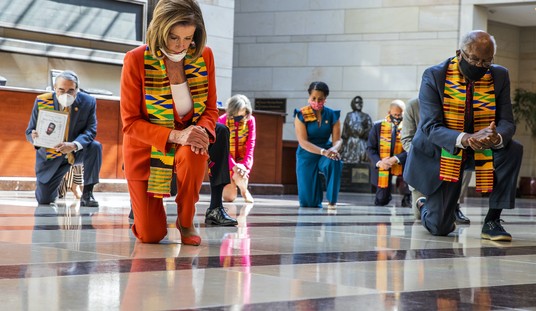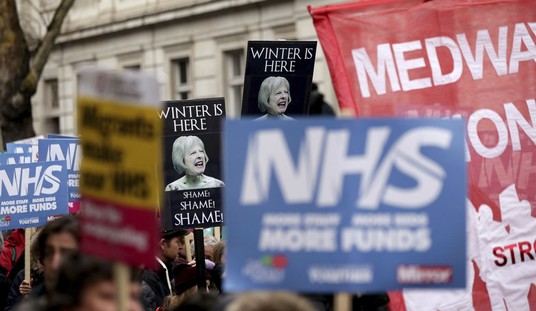The debate over school closures in the COVID-19 pandemic has mainly focused on health versus economics. ProPublica reminds us that it should have been viewed all along as trade-off between two sets of potential health disasters. Did the risks of allowing schools to operate with masking and as much distancing as possible outweigh the outcomes of keeping children and teens locked in their homes with no social or athletic outlets?
As ProPublica discovered by comparing two districts straddling the Texas-New Mexico border, the answer to that is a tragic, infuriating no:
As time has gone on, evidence has grown on one side of the equation: the harm being done to children by restricting their “circulation.” There is thewell-documented fall-off in student academic performance at schools that have shifted to virtual learning, which, copious evidence now shows, is exacerbating racial and class divides in achievement. This toll has led a growing number ofepidemiologists,pediatricians andother physicians to argue for reopening schools as broadly as possible, amidgrowingevidence that schools are not major venues for transmission of the virus.
As many of these experts have noted, the cost of restrictions on youth has gone beyond academics. The CDC found that the proportion of visits to the emergency room by adolescents between ages 12 and 17 that were mental-health-related increased 31% during the span of March to October 2020, compared with the same months in 2019.A study in the March 2021 issue of Pediatrics, the journal of the American Academy of Pediatrics, of people aged 11 to 21 visiting emergency rooms found “significantly higher” rates of “suicidal ideation” during the first half of 2020 (compared to 2019), as well as higher rates of suicide attempts, though the actual number of suicides remained flat.
Doctors are concerned about possible increases in childhood obesity — no surprise with many kids housebound in stress-filled homes — whileaddiction experts are warning of the long-term effects of endless hours of screen time when both schoolwork and downtime stimulation are delivered digitally. (Perhaps the only indicator of youth distress that is falling — reports of child abuse and neglect, whichdropped about 40% early in the pandemic — is nonetheless worrisome because experts suspect it is the reporting that is declining, not the frequency of the abuse.)
Finally, the nationwide surge in gun violence since the start of the pandemic has included, in many cities, a sharp rise incrimes involving juveniles, including many killed or arrested during what would normally be school time. In Prince George’s County, Maryland, a Washington, D.C., suburb where school buildings have remained closed, seven teenagers were charged with murder in just the first five weeks of this year.
“An entire generation between the ages of 5 and 18 has been effectively removed from society at large,”wrote Maryland pediatrician Lavanya Sithanandam in The Washington Post. “They do not have the same ability to vote or speak out.”
The authors contrast the experiences of Hobbs, New Mexico with its neighbor Denver City, Texas to illustrate the terrible trade-offs made to lock down the schools and activities. In Denver City, where the state allowed the district (and all others in Texas) to decide whether to operate in person, students overwhelmingly chose in-person instruction. Thanks to the contact tracing that Denver City and other districts did, they soon discovered that the spreader events didn’t take place in the schools themselves:
The school did not administer coronavirus tests on its own, but if a student or teacher tested positive locally, the school conducted contact tracing to determine if any other teacher or student had been exposed to them for 15 minutes or more, unmasked, within six feet. Anyone who fit that definition had to quarantine at home, initially for two weeks, eventually only for 10 days, in line with CDC guidelines. The district, which offered daily and weekly tallies of cases on its website, determined that the vast share of transmissions seemed to be happening outside school, as research was finding to be the case in other places, too. “The weekends is where they’re getting it,” said principal Rick Martinez. “If we could have them all week, this is the best place for them to be.”
In Hobbs, however, a string of suicides and suicide attempts provided a horrific contrast to the near-normalcy in Texas. The ProPublica reports on these, and especially of the one they feature, is just heartbreaking. However, this is not limited to a small town in New Mexico:
As the pandemic carried through the summer, worrisome signals started appearing across the country. In addition to the CDC report on the rising share of visits to emergency rooms by teenagers in distress, a University of Wisconsin survey of more than 3,000 high school athletes during the summer found that more than two-thirds reported high levels of anxiety and depression, 37% higher than past studies.
The data had been there all along for everyone to see — not just on the notable lack of spread in schools among children, but also in the physical and mental health outcomes on students in lockouts. In the first couple of months, those policies made sense while we learned more about the disease and its transmission vectors, but by the start of the new school year, the science pointed us in one direction — reopening schools and getting kids back into the proper educational environment. Remote learning should only be an option for those with specific vulnerabilities, but everyone else needs to be back in class.
Perhaps this report from ProPublica will be enough to marshal the political forces necessary to rescue children from these destructive policies. It’s too bad that for some of them, it will come too late.








Join the conversation as a VIP Member